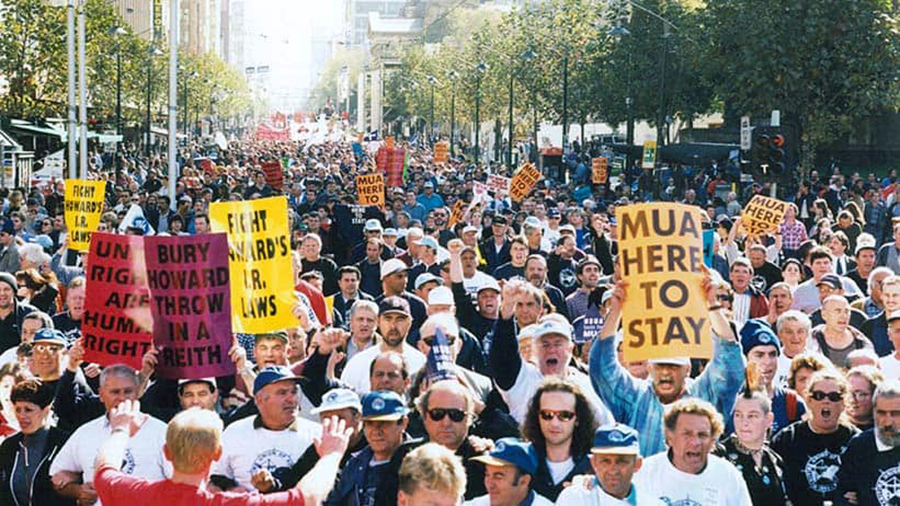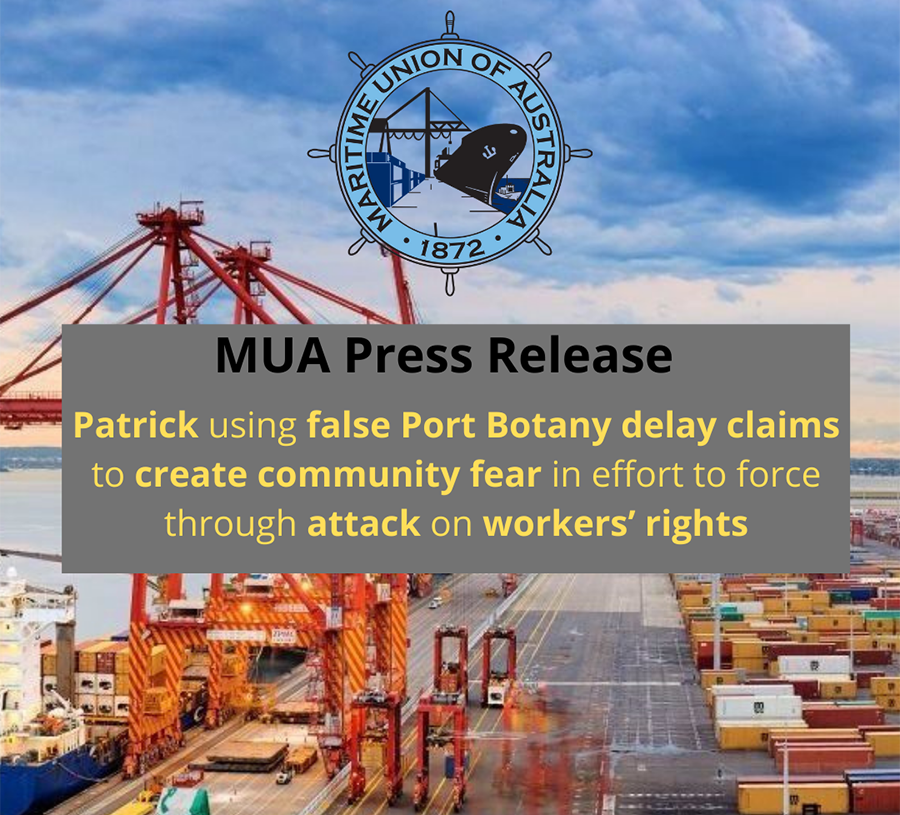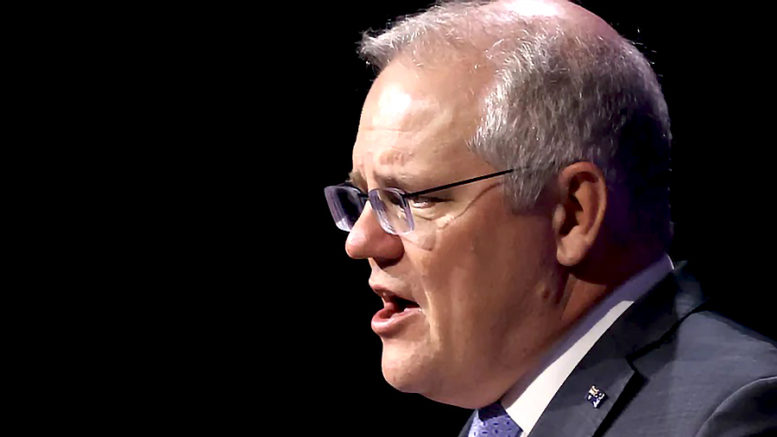Editorial Opinion
Everyone should be clear about one thing. An attempt is being made to revisit the Patrick battle of 1998. The epic showdown involved Patrick, backed by Howard government and significant sections of big business, aimed to strike a major blow against Australia’s union movement.
In was bound up with John Howard’s shift to what was called WorkChoices, which was mostly about taking unions out of the picture, in order to bring about ‘labour market deregulation’. This meant imposing individual contracts, extending the use of labour hire, and taking away working conditions.
The waterfront was singled out as the spearhead to realise this ambition.
It failed. Australia mobilised to defend the Maritime Union of Australia (MUA). People power descended onto the streets and into Australia’s ports, in numbers not seen before or since.
Public opinion was solidly on the side of the union. In the end, even the police refused to try and physically forcefully clear the waterfront . This was a serious defeat for the Howard government.

Melbourne gathers to defend the MUA in 1998
The Covis-19 pandemic is now being used to re-launch this war. Howard style deregulation is back on the agenda and Patrick wants a rematch, and a list off major employers has been calling for the same.
The have judged that with Covid-19, unions are in a weaker position, and that this has opened an opportunity.
This is the reason why Scott Morrison fired a shot over the bough last Saturday, at an Adelaide Liberal Party function.
He Called out the union for taking industrial action “at a time when we are in a COVID national recession,” and claimed that “the worst elements of the union movement and the militancy of the MUA is on display.”
“Frankly, enough is enough,” he added.
Morrison insisted that the union is holding the economy to ransom, causing major disruption of the ports, and holding back exports, suggesting this is all about trying to force the employer to pay a 6 percent wage rise.
This is not what’s going on. Industrial action has been limited. There was a four hour stoppage about a month ago and some minimal overtime bans. This came about, because management had dragged negotiations for 4 years, and finally put out a document demanding the taking away of 60 working conditions, in exchange for a small wage increase.
Morrison has ignored this and declared war against the union.
The existing industrial relations system allows a limited bargaining period where industrial action is permitted.

It is Patrick and the government that have decided to step out of their own industrial relations system. This and the mouthing of bogus claims are good indicators of the real intent.
Never mind that there are supposed to be talks to find a united approach out of the economic and pandemic crisis. The tripartite meetings between government employer organisations and unions, have turned out to be a feint to cover the real intent.
This deserves a firm response from Australia.
The strategy to dust off WorkChoices has a very big flaw. Most Australians believe in a fair go. Push too hard in the opposite direction, and they might not stand for it.
Today, the MUA is presenting a proposal to defuse the situation. It is a call to maintain the existing enterprise agreement for another 12 months, keep working conditions as they are, and settle for a 2.5 percent wage increase.
This puts the ball in the Patrick’s and Morrison’s court. If they refuse the compromise and persist with their strategy, Australia should not cop it and stand up to defend the MUA once again.


Be the first to comment on "Scott Morrison’s attack on the union is an echo of the 1998 Patrick waterfront battle"